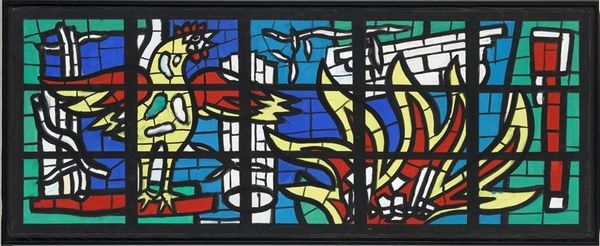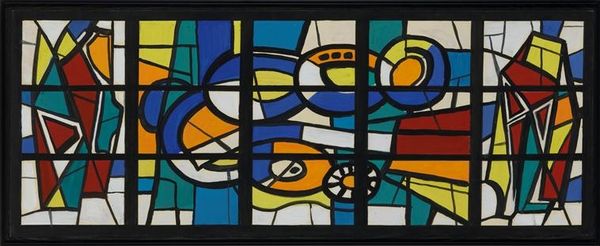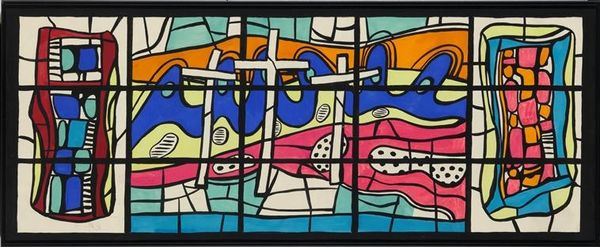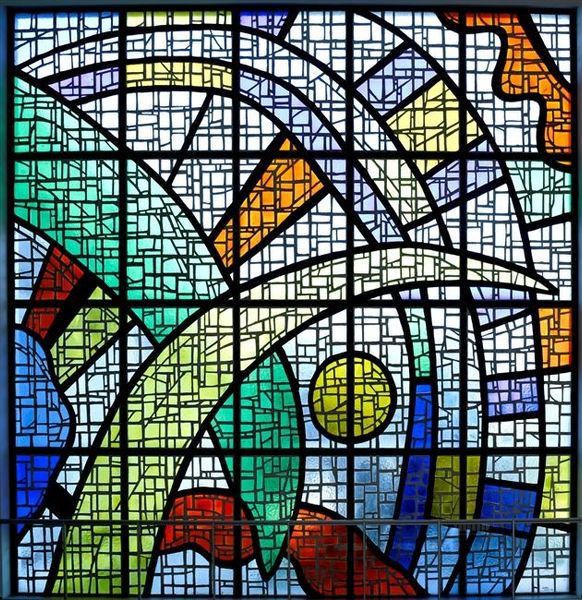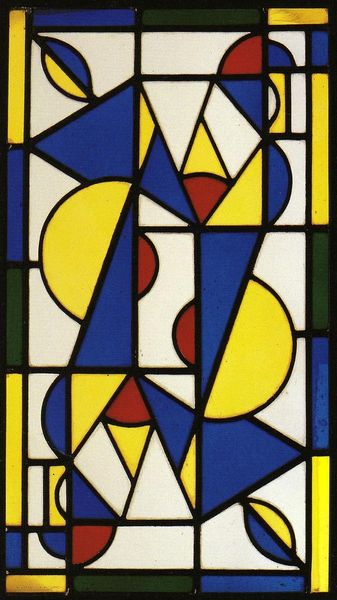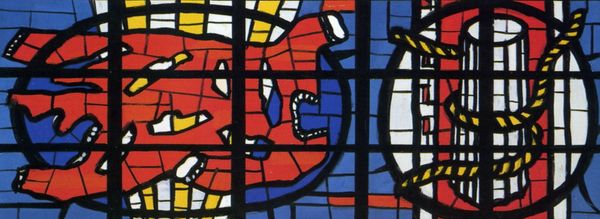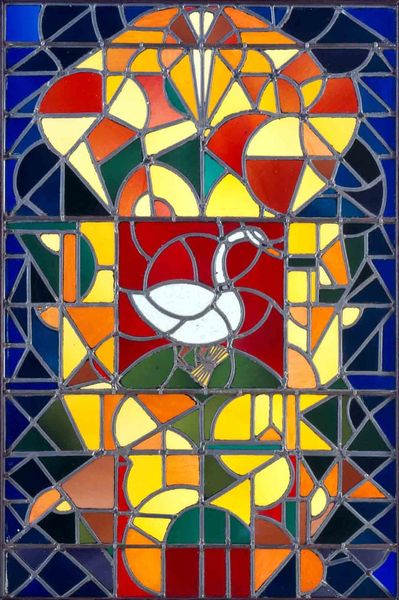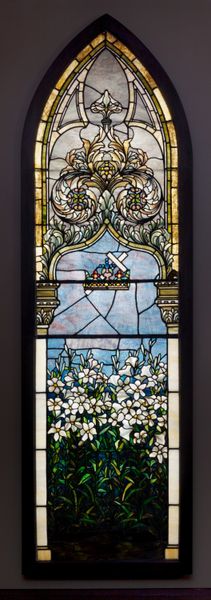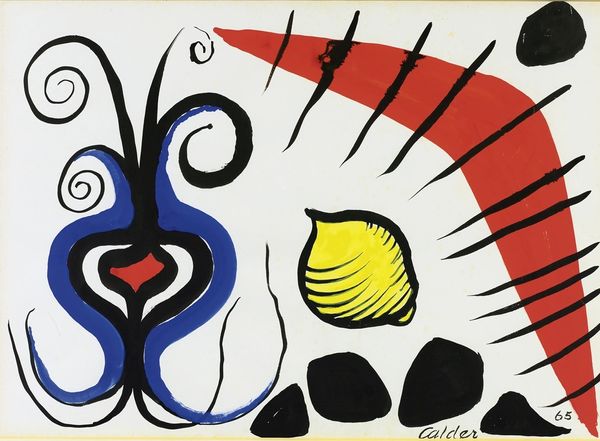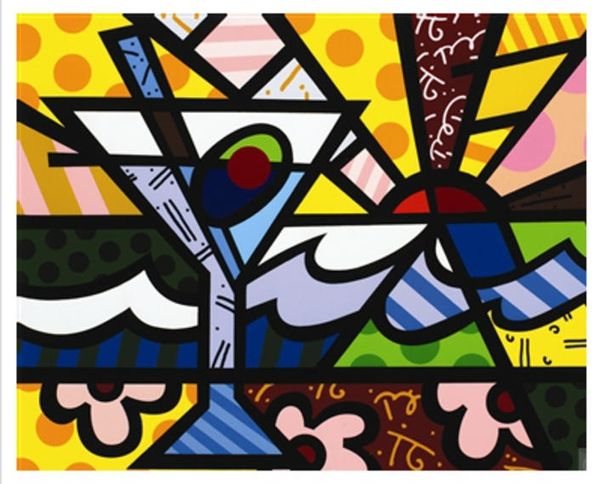
painting, glass
#
painting
#
pop art
#
geometric pattern
#
glass
#
abstract pattern
#
geometric
#
abstraction
#
pop-art
Dimensions: 38 x 94 cm
Copyright: Fernand Leger,Fair Use
Curator: This striking piece is the "Audincourt window" by Fernand Léger, currently housed in the Musée National Fernand Léger in Biot, France. Created using glass, it's a beautiful example of abstraction within the pop-art movement. Editor: My immediate response is surprise at how modern this feels, even if it does not have an exact date! The colours are bold and the geometric patterns jump out. Is that supposed to be a sacred heart in the middle? Curator: Yes, absolutely. And note the use of colour, that's really interesting here. Leger's earlier works engage directly with the socio-political ramifications of wartime. Later, figures, such as the sacred heart here, gain visibility. What narratives do we create in a time of social change? How does this abstract version interact with collective trauma? Editor: That's interesting. I'm focusing on the iconographic aspect. The sacred heart—burning flame, crown of thorns—traditionally represents Christ's love and suffering, but here, encased in such flat blocks of colour, those potent symbols take on a… playful air almost? It has almost shed all association with religion. Curator: Perhaps… I would argue instead, it speaks to the way that institutionalised narratives shift or are co-opted, especially by political interests. Even abstract, symbols carry tremendous political baggage. To remove religion from it ignores the legacy that Christian iconography plays, whether in support or against the dominant culture. Editor: I can see that argument too. But still, isn't it a transformation? The lines are so clean, it strips back the religious connotations to a very raw, primal emotion—simply 'heart', if you will. And consider also the almost industrial coldness. The piece suggests modern interpretations of love in light of contemporary conflict, stripped of religiosity. Curator: That interpretation, too, can easily fit within discussions around shifts within late 20th century society. Where do people find purpose? And also, where do people look for protection, when everything changes? This piece gives us much to think about. Editor: Definitely. What appears at first glance as light, pop art turns out to hold layers of history and deeper questions. Curator: Yes, this allows for the possibility to reimagine and reinvent meanings for traditional forms.
Comments
No comments
Be the first to comment and join the conversation on the ultimate creative platform.
